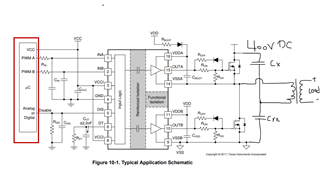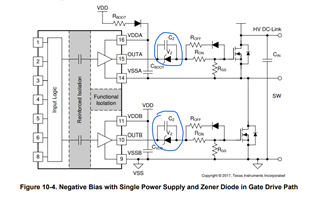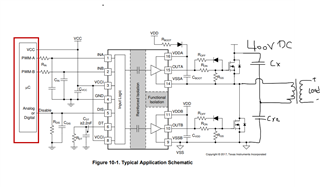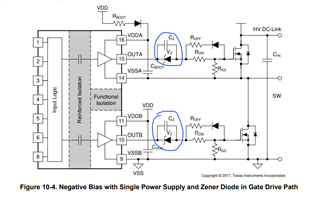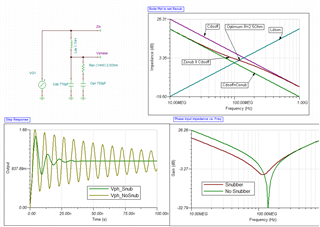Other Parts Discussed in Thread: LM5039, UCC28083, UCC21550, SN6501, UCC28086
Hi,
I want to design an isolated half bridge converter 400VDC to 500V AC. The IC of interest is the UCC21520 - isolated dual-channel gate driver evaluation.
I want to use a single power supply configuration and generates negative bias through a Zener diode in the gate drive loop as shown in page 32 figure 10-4. However, this IC have two inputs INA and INB, but I want to use a single PWM to drive the input. I see that page 23 Figure 10-1 provides a configuration to drive the two inputs with a PWM controller. (Figure 1 attached)
- Will PWM controller such as LM5039 - Half-bridge PWM controller with advanced current limit (voltage control) be suitable for such application. The Frequencies can be adjusted from the RT pin while maintain 50% duty, which is suitable for the single power supply configuration of the UCC21520 IC as mentioned in page 32, Figure 10-4.
- I need options on how to digitally control the RT pin of the LM5039. I am considering using a I2C device pot such as a Digital Potentiometer ICs 50K I2C single 7-bit volatile memory, SOT-363 Microchip Technology Part number MCP4017T-503E/LT. Will it be suitable to control the Frequency of the PWM controller – LM5039? If not, what other options are available?
- Regarding the single power supply – example 3 in the datasheet, what are the important of the components circled in blue-colour? I see that the schematic application in page 23 Figure 10-1 does not have it. (Figure 2 attached). Is it needed?
- Finally, will the Figure 1 (attached) work with the abovementioned descriptions?
Your comments, recommendations and evaluation boards are welcomed.
Kind regards,


